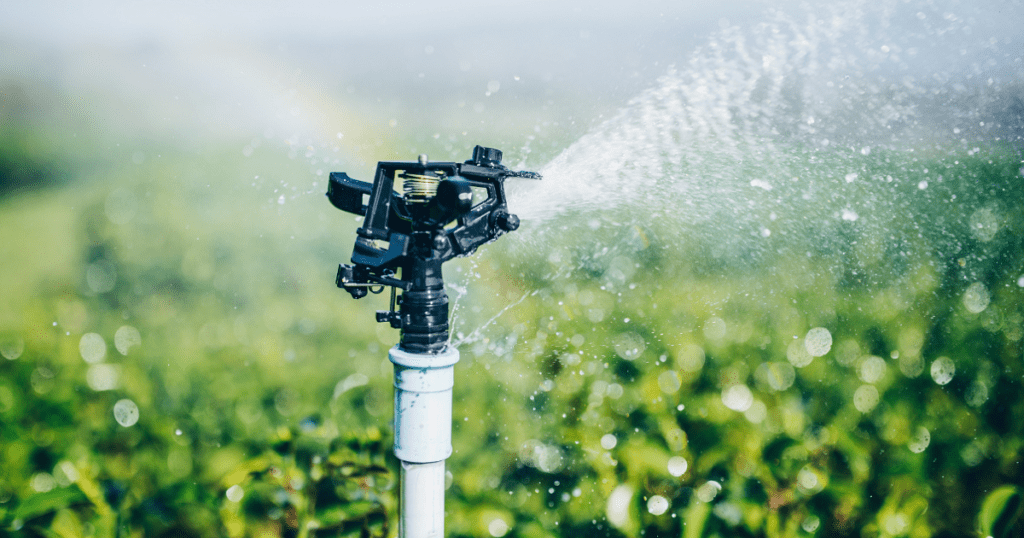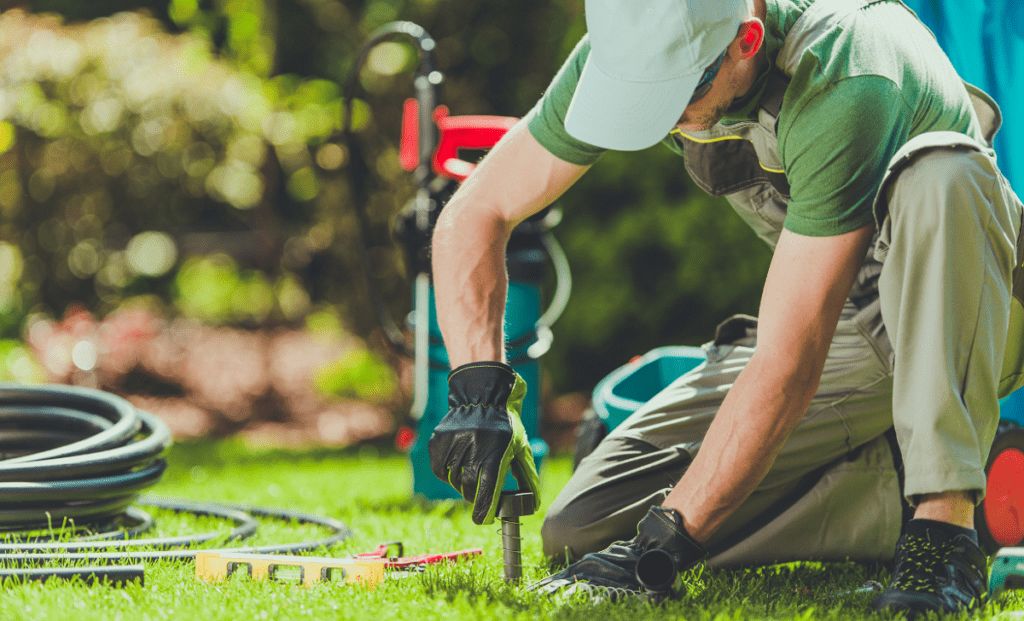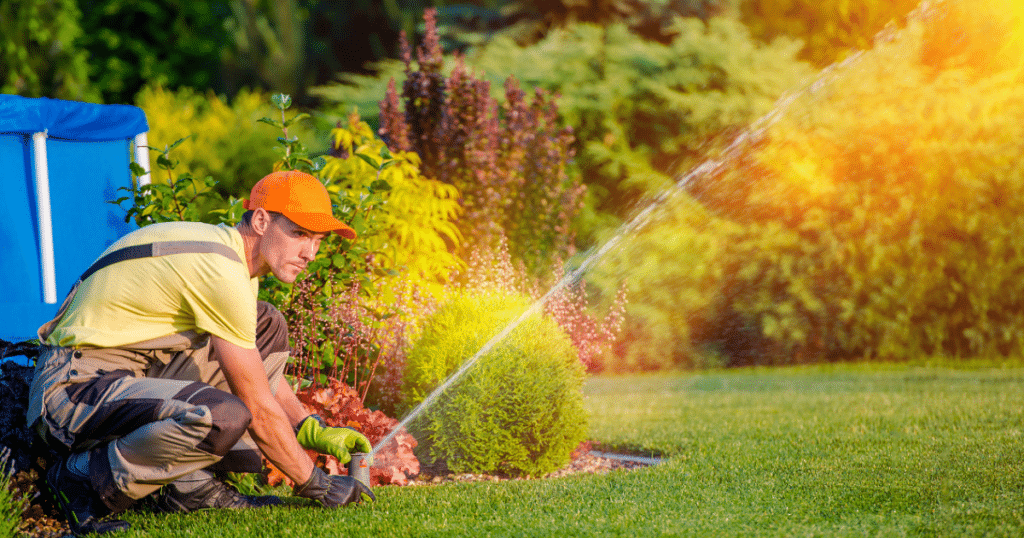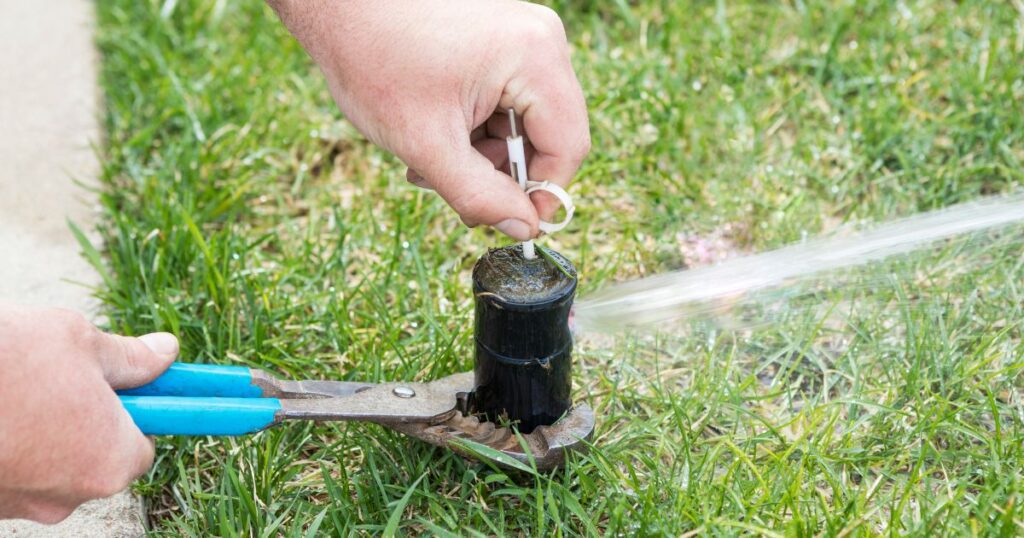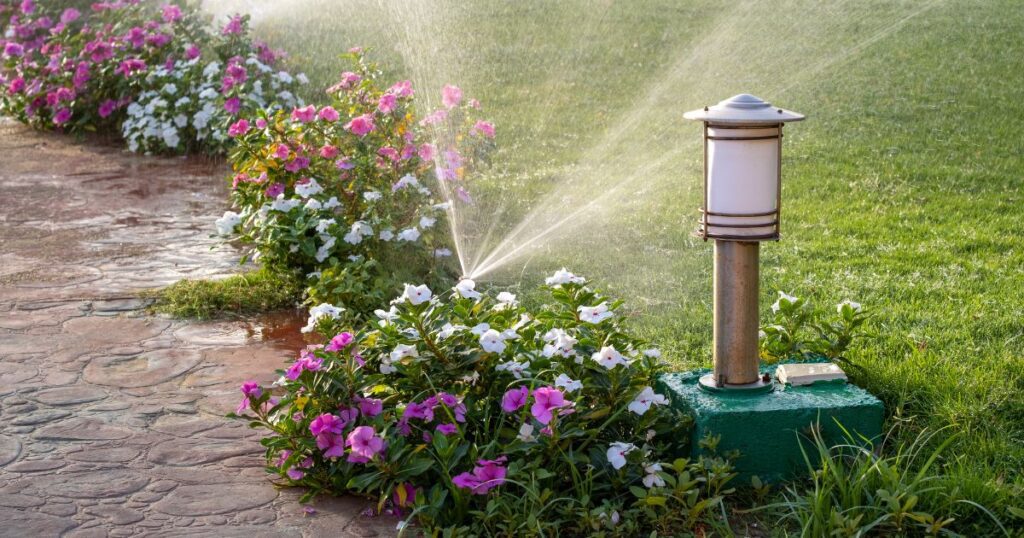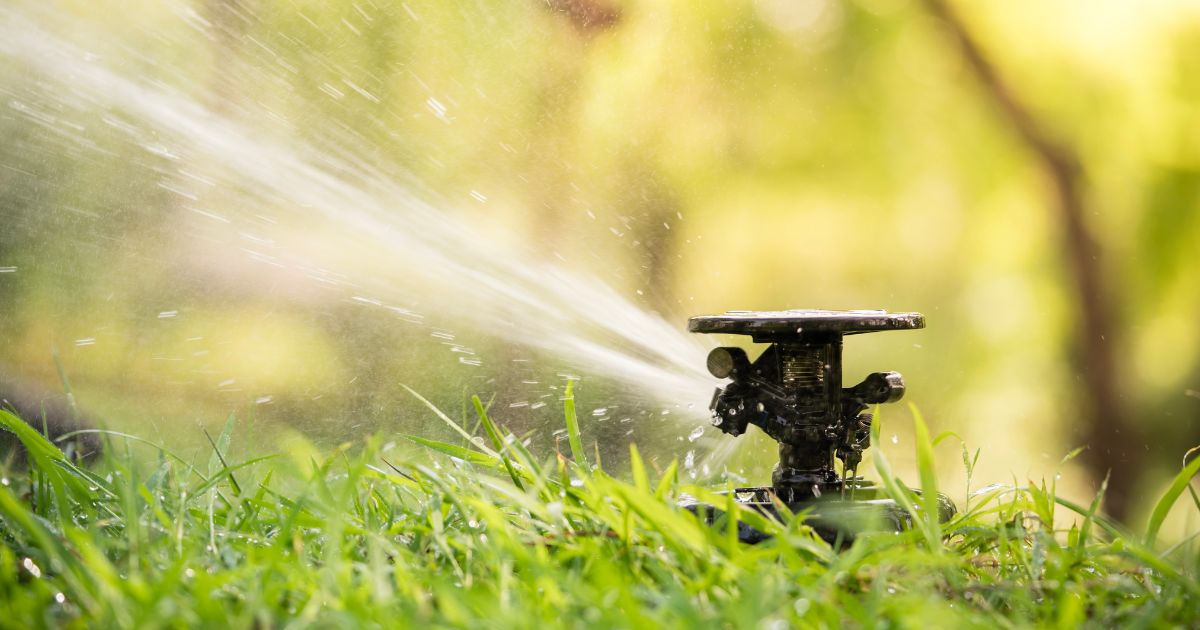
Calling all backyard explorers and secret agents of irrigation! Are you ready to embark on a thrilling quest to uncover the hidden treasures of your sprinkler system? How to find a buried sprinkler head? Get your detective hats on and prepare to dive into the mysterious world of buried sprinkler heads. We’ve got all the tips, tricks, and tools you need to reveal these elusive gems and bring your yard back to life. So, gather your shovels, magnifying glasses, and a dash of curiosity as we uncover the secrets of finding buried sprinkler heads. Adventure awaits!
To find a buried sprinkler head, start by visually scanning the area for any signs or markers indicating its location. Next, use a metal detector or a special sprinkler head locator tool to pinpoint its exact position underground. Once you’ve identified the spot, carefully dig around the area to expose the buried sprinkler head and make any necessary adjustments or repairs.
The Importance of Finding a Buried Sprinkler Head
Ensuring that your sprinkler system is working properly can save you money, reduce water waste, and help keep your lawn and garden looking their best. When one or more sprinkler heads are buried or malfunctioning, it can cause uneven watering, dry patches in the lawn, or even water damage to your property.
The first step in fixing these issues is to locate the problem area. Finding a buried sprinkler head may seem like an intimidating task at first, but with the right tools and techniques, it can be done quickly and easily.
The Risks of Ignoring a Buried Sprinkler Head
Ignoring a buried sprinkler head can lead to several problems. One of the most obvious issues is that it prevents proper watering of your lawn and garden. Without adequate water distribution through all areas of your yard, some areas may receive too much water while others receive too little.
This makes it difficult for plants to thrive in those areas where there is not enough water. Another problem caused by ignoring a buried sprinkler head is wasted resources and increased bills.
When one or more heads are malfunctioning, they may be wasting water either by over-spraying onto sidewalks or driveways or by leaking underground. This leads to higher water bills and an environmental impact because of wasted natural resources.
Ignoring this issue could end up causing property damage if left unrepaired for too long. In-ground leaks often go unnoticed until they have caused significant damage underground that will eventually surface as soggy areas above ground.
How to Find a Buried Sprinkler Head
The process of finding a buried sprinkler head requires some basic gardening tools, such as shovels and trowels, along with specialized equipment, such as metal detectors. It can be broken down into several steps, starting with locating the general area of the sprinkler head and narrowing down its location.
Once you have identified the area, you will then need to carefully dig around it until the sprinkler head is fully uncovered. After that, it’s a matter of testing and adjusting as needed to ensure proper function.
Gathering Necessary Tools
Before diving into the process of finding a buried sprinkler head, make sure that you have all of the necessary tools on hand. These include a shovel for digging and moving dirt, a metal detector for scanning through the soil to locate metal objects such as pipes or heads and spray paint or flags to mark out areas where you suspect there may be an issue.
Gathering Necessary Tools
The Importance of Using the Right Tools
Before embarking on a project to locate a buried sprinkler head, it is important to have all the necessary tools. Using the right tools can make the process much easier and more efficient. In this section, we will cover the essential tools needed for finding a buried sprinkler head: a shovel, metal detector, and spray paint.
Shovel
The shovel is one of the most important tools you will need when locating a buried sprinkler head. It is used to dig up dirt around where you suspect that the sprinkler head is located.
When choosing a shovel, it is important to choose one with a comfortable handle and sturdy construction. The blade should be sharp enough to cut through the soil easily but not too sharp that it damages any wires or pipes that may be in close proximity.
Metal Detector
A metal detector is an essential tool when searching for a buried sprinkler head, as it allows you to detect any metal objects that may be partially or completely underground. This tool emits electromagnetic waves into the ground, which reflect back when they hit any object made of metal. When purchasing or renting a metal detector for this task, look for one with different sensitivity levels so you can adjust its settings based on how deep you think the object might be.
Spray Paint
Once you think you have located where the sprinkler head is situated underground using your metal detector or other means, such as looking for signs of water pooling in certain areas along your irrigation line, it’s time to mark out where you suspect it lies using spray paint. This helps ensure no extra digging and damage occurs during excavation work.
Other Recommended Tools
Aside from these three essential tools, other recommended items can make the task of finding a buried sprinkler head easier, safer, and more efficient. These include a pair of gloves to protect your hands from any sharp or dangerous items you may encounter while digging, safety goggles to protect your eyes from soil particles and an old toothbrush or small brush for cleaning away debris around the sprinkler head once it has been uncovered.
Locating the General Area of the Sprinkler Head
Walking Along the Sprinkler Line
The first step in finding a buried sprinkler head is to walk along the sprinkler line and look for any signs of water pooling or grass that is greener than usual. This can help you narrow down the general area where the sprinkler head might be located. Remember that some sprinkler heads may be buried deeper than others, so you may need to use additional methods to locate them.
If you notice water pooling in a certain area, this could indicate that a sprinkler head is located nearby. However, it’s important to note that there could be other reasons for water pooling, such as poor drainage in your yard.
If you suspect that a sprinkler head might be located in this area, it’s best to use other methods to confirm its location. Looking for patches of grass that are greener than usual can also indicate the presence of a buried sprinkler head.
This is because water from a properly functioning sprinkler system will distribute evenly across your lawn, resulting in healthy and green grass. Take note of areas where the grass looks healthy and investigate further.
Using a Metal Detector
Another method for locating a buried sprinkler head is by using a metal detector. You can purchase or rent metal detectors specifically designed for finding objects buried underground. When using a metal detector to locate a sprinkler head, start at one end of the line and work your way down slowly.
As you move along the line with your metal detector, listen for any sounds indicating the presence of metal underground. When you get close to an object with metallic properties, such as an iron or brass casing surrounding its valve mechanism, which controls flow within it, you’ll hear these sounds increase in intensity and frequency until they become quite loud.
When you hear these sounds, mark the area with spray paint so that you can dig down and uncover the sprinkler head. Keep in mind that metal detectors can pick up signals from other buried objects, such as rocks or pipes, so it’s important to use additional methods to confirm that the object you’ve detected is indeed a sprinkler head.
Combining Methods for Best Results
While walking along the sprinkler line and using a metal detector are both effective methods for locating a buried sprinkler head, they’re even more effective when used together. By combining these methods, you’ll be able to narrow down the general area where the sprinkler head is located and then use your metal detector to confirm its presence.
Once you’ve marked the area with spray paint based on your observations while walking along the line, use your metal detector to scan for any metallic objects underground. If you detect something in this area with your metal detector, it’s likely that you’ve found your buried sprinkler head.
By using these two methods together, you’ll increase your chances of finding the sprinkler head quickly and efficiently. This will save time and prevent unnecessary digging in other areas of your lawn.
Expert Tip: Checking Your Irrigation System Map
If all else fails or if you are having trouble locating a specific zone of irrigation heads on one side of the property or another side beyond sight because of landscaping configurations, consult with an irrigation expert who may have access to maps detailing where each irrigation zone is located. They may also provide additional guidance on how best to locate any buried heads within those zones.
Narrowing Down the Location
Marking with Spray Paint
After scanning the area with a metal detector and walking along the sprinkler line to look for any signs of water pooling or greener grass, it’s time to narrow down the location of the buried sprinkler head. Start by using spray paint to mark a circle around where you believe the sprinkler head is located. Be sure to choose a bright and noticeable color that will be easy to spot later when digging.
When marking with spray paint, keep in mind that sprinkler heads are usually placed at regular intervals along the irrigation line. Therefore, if you have already uncovered one head, you can use its location as a reference point to estimate where others may be found.
Digging a Small Hole
Once you have marked off the general area where you suspect the buried sprinkler head is located, it’s time to dig a small hole. The hole should be about six inches in diameter so that there is enough space to locate and uncover any evidence of the sprinkler head.
As you dig, keep an eye out for signs of water or moisture. Wet soil could indicate that there is an underground pipe leaking water from your irrigation system.
Carefully remove soil from around any potential signs of moisture until you reach dry soil again. If, after digging this small hole, no evidence of a sprinkler head is found, repeat steps two and three until it’s located.
Checking for Evidence
Once your hole has been dug, take a closer look at what you’ve uncovered so far. Look for anything that might suggest there is an underground pipe below – this could include bits of PVC piping or metal fixtures sticking out from just below ground level.
If no evidence was found in step two above, but something seems suspicious or off (perhaps soft dirt or an unnatural bump), keep digging and expanding the hole to see if anything becomes more apparent. If you still can’t find it, use a metal detector to scan the area again.
By narrowing down the location with spray paint and digging a small hole to check for evidence of the sprinkler head, you’re one step closer to successfully uncovering and fixing your irrigation system. In the next section, we’ll discuss how to locate and uncover the sprinkler head itself.
RELATED: How To Find Sprinkler Lines: Comprehensive Guide 2023
Finding and Uncovering the Sprinkler Head
The Art of Digging
Once you’ve narrowed down the general location of the sprinkler head, it’s time to start digging. It’s important to be patient and careful during this process, as you don’t want to damage the sprinkler head or any other pipes in the process. Start by using your hands or a small trowel to carefully dig around where you marked with spray paint.
You can also use a hoe or rake to clear away any debris that may be covering the area. As you dig deeper, it’s important to pay attention to any changes in soil color or texture.
If you notice a change, such as soil becoming more compact or sandy, this could indicate that you’re getting closer to the sprinkler head. Be sure not to dig too deep, however; most sprinkler heads are buried just a few inches below ground level.
Uncovering the Sprinkler Head
Once you find the sprinkler head, use your shovel to carefully remove dirt from around it until it is fully uncovered. Be sure not to damage any of the parts while removing dirt – if necessary, use your hands instead of a shovel for added precision.
As soon as you have removed enough dirt around it so that it is visible but still partially covered with soil and sand, use your hand lightly on top of it and confirm if there are no leaks on/around its perimeter and if water pressure is normal coming out from its nozzle. If everything seems fine, then remove all remaining dirt from around its base with care when using tools like shovels so that no damage comes about in relation to pipe connections, etc., these parts are often fragile and should be treated delicately.
The Importance of Careful Uncovering
It’s important not just to uncover but also to handle buried sprinkler heads delicately. The removing and replacing of the dirt around the sprinkler head should be done carefully to avoid damaging any pipes or wires that may be connected to it. If you accidentally damage any pipes or wires, your irrigation system may not function properly, which could lead to costly repairs.
Additionally, it’s important not to damage the sprinkler head itself while uncovering it. These parts are often fragile, so take extra care when using tools like shovels so that no damage comes about in relation to pipe connections, etc. Taking care during this process will save you time and money down the line.
Final Thoughts
Finding and uncovering a buried sprinkler head can be a tedious process, but with patience and careful handling of the parts involved, it is doable for anyone. Remember to gather all necessary tools before starting, scan the area for metal objects with a metal detector if possible, and use spray paint to mark where you believe the sprinkler head is located. Dig around where you are marked with spray paint using your hands or a small trowel while keeping an eye out for changes in soil color or texture which could indicate that you’re getting closer to your goal!
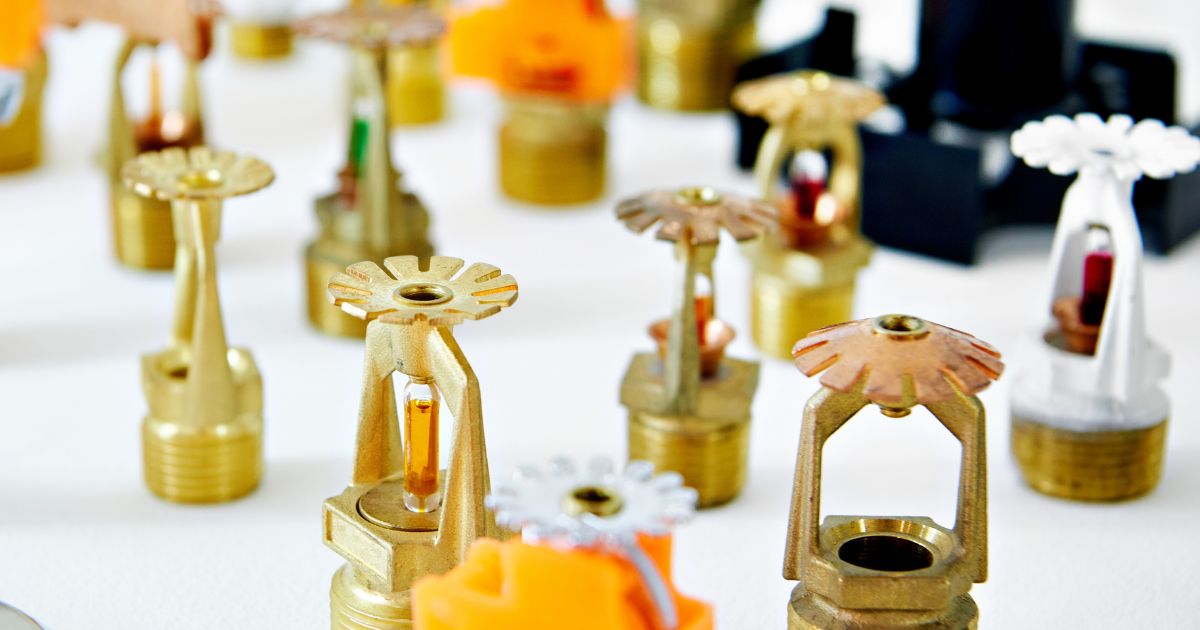
Testing and Adjusting
Testing the Sprinkler Head
After finding and uncovering the sprinkler head, it’s important to test it out to ensure that it’s functioning properly. Turn on your irrigation system and observe the sprinkler head’s performance.
Make sure that it is spraying water evenly across the desired area. If there are any issues, such as low water pressure or uneven spraying, you may need to adjust the sprinkler head.
Adjusting the Sprinkler Head
To adjust a sprinkler head, use a screwdriver to turn the adjustment screw located at the top of the sprinkler head. This will allow you to adjust its direction and distance. Turning the screw clockwise will decrease distance, while turning it counterclockwise will increase distance.
To adjust direction, turn the screw left or right. If your sprinkler head is adjustable in multiple ways (such as both distance and direction), make small adjustments one at a time so you don’t accidentally overcompensate in one direction.
Common Issues and Solutions
One common issue with sprinkler heads is that they can become clogged with dirt or debris over time, causing uneven spraying or even complete blockage of water flow. In these cases, simply unscrew the top of the sprinkler head and rinse out any debris before putting it back on.
Another issue is low water pressure caused by other issues in your irrigation system. If this is happening consistently across all of your sprinklers, check for leaks or kinks in your hoses or pipes before assuming that a single sprinkler head needs adjustment.
RELATED: How to Protect Sprinkler System From Freezing: Why it Matters
Frequently Asked Questions
What is the best way to locate a buried sprinkler valve?
To locate a buried sprinkler valve, you can use a valve locator device or a metal detector designed for locating underground objects. These tools can help you detect the electromagnetic signals emitted by the valve, allowing you to pinpoint its location accurately.
What happens if a sprinkler head is buried?
If a sprinkler head is buried, it can lead to reduced water distribution and coverage, potentially causing dry spots in your lawn or overwatering in other areas. It is important to ensure that sprinkler heads are properly installed at the recommended height to ensure optimal performance.
How do you trace an underground sprinkler pipe?
To trace an underground sprinkler pipe, you can use a wire and tone generator or a pipe locator device. These tools send signals through the pipe or wire, allowing you to follow its path and locate the underground pipe without the need for digging.
How do I find a sprinkler head without turning the water on?
To find a sprinkler head without turning the water on, you can visually inspect your lawn for small protrusions or markings indicating the location of the sprinkler heads. Additionally, you can use a metal detector to detect the metal components of the sprinkler head beneath the ground.
How do you find a sprinkler head without digging it?
To find a sprinkler head without digging it, you can use a sprinkler head locator tool or a wire probe. These tools can help you locate the position of the sprinkler head without having to excavate the area.
How far are sprinkler lines buried?
Sprinkler lines are typically buried at a depth of 8 to 12 inches. However, the exact depth can vary depending on local building codes and other factors. It is important to consult with a professional or refer to local regulations for specific guidelines on burying sprinkler lines in your area.
Conclusion
Finding a buried sprinkler head may seem like an overwhelming task at first, but with some patience and careful digging techniques, it can be done without too much difficulty. Once you’ve located and uncovered your sprinkler head, make sure to test it out and adjust it as needed for optimal performance. By taking the time to properly care for your irrigation system, you can ensure that your lawn and garden stay healthy and beautiful all season long.

